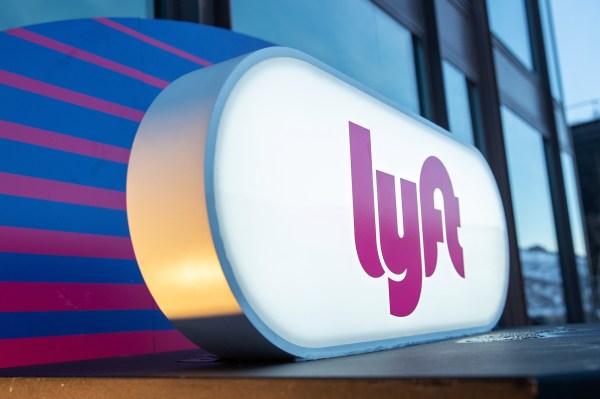Lyft’s strategy of slashing ride-hail fares to compete with Uber has resulted in slow and steady gains for the company, but competition remains fierce.
According to Lyft’s third-quarter earnings, reported Wednesday, Lyft’s active ridership numbers have increased sequentially quarter-over-quarter this year. In the three months ending September 30, Lyft recorded 22.4 million active riders, up from 21.5 million in the second quarter and 19.6 million in the first.
Last quarter, that bump in ridership caused Lyft to take a hit in revenue per active rider. In Q3, that problem seems to be correcting itself. Lyft’s revenue per active rider was $51.67, up from $47.51 in Q2.
Gross bookings, as a result, are up QoQ by 3%. That’s good news for Lyft, but compared to Uber’s 7% increase in ride-hail gross bookings between the second and third quarters, it’s a little less impressive. Especially when we consider that Lyft also has a shared bike and scooter business. The company doesn’t break down its revenue or gross bookings into ride-hail and bikeshare, so it’s impossible to know how much of that revenue is made up of ride-hail riders or bike riders.
Still, the battle for ride-hail market share rages on. In the first half of the year, Lyft’s price-cutting strategy helped the company gain market share from Uber. But according to data analytics firm YipitData, Uber managed to recapture some lost share in August and September.
“The net result of these shifts was stability in market share in [the third quarter], but the trend in the last two months of data has been favorable for Uber,” a spokesperson from YipitData told TechCrunch.
Lyft beat Wall Street estimates of $1.14 billion, per Yahoo Finance data, with a revenue of $1.158 billion. The company also managed to seriously cut down costs, as its new-ish CEO David Risher promised the company would do. Lyft reported a net loss of $12.1 million, which is way down from the $114.3 million in Q2, and down from the $422.2 million lost in the third quarter of 2022.
On an adjusted basis, Lyft reported adjusted EBITDA of $92 million for the quarter, beating its own expectations of between $75 million and $85 million.
Investors have had mixed reactions to Lyft’s earnings. The ride-hail company’s stock price jumped 3.6% immediately in after-hours trading, but then immediately plummeted 10%.
Lyft’s outlook for Q4 2023
The ride-hail giant is updating how it reports metrics, so this was the first quarter that Lyft reported gross bookings. Starting in Q4, Lyft says it “will no longer formally present metrics that anchor to revenue.” That means Lyft will now present gross bookings, active riders, rides and adjusted EBITDA margin calculated as a percentage of gross bookings, but it will stop reporting revenue per active rider, adjusted EBITDA margin calculated as a percentage of revenue, contribution and contribution margin.
Omitting revenue per active rider might make it more difficult in the future to determine if Lyft is actually making more money by bringing on more riders, or if it’s subsidizing rides to capture market share.
Given these new priorities, Lyft’s outlook for the fourth quarter is as follows: The company expects to pull in gross bookings of between $3.6 billion to $3.7 billion, with an adjusted EBITDA of $50 million to $60 million, and an adjusted EBITDA margin of about 1.4% to 1.6%.
Growth drivers and tailwinds in Lyft’s future
Aside from price wars with Uber, Lyft is attempting to capture more riders through other targeted means.
In September, Lyft introduced its Women+ Connect feature, which lets women and nonbinary drivers set a preference for picking up only women riders, to five U.S. cities. This was designed to bring more women drivers to the app, but might also incentivize some women to make the switch from Uber to Lyft.
Additionally, in August, Lyft launched an ads unit to start displaying advertisements in-app, via in-car tablets, on rooftops and at bikeshare stations. It’s not clear if and when Lyft will break out any revenue generated from ads into a separate line item on the balance sheet.
Some of this looks promising, but Lyft will also face headwinds and hits to the balance sheet in the coming months. Toward the end of Q3, Lyft got slapped with a $10 million fine over an SEC charge that the ride-hailing company failed to disclose a board director’s role in the sale of $424 million worth of private shares before its IPO.
Earlier this month, Lyft and Uber also settled a wage-theft claim in New York that will see them paying collectively $328 million ($290 million from Uber, $38 million from Lyft) into two funds.
It’s not yet clear when those debts will have to be paid off.
